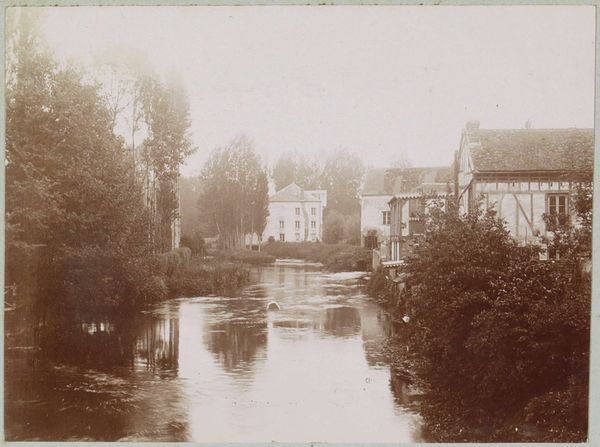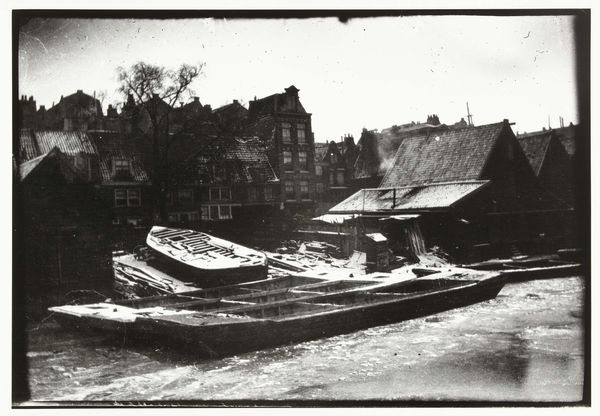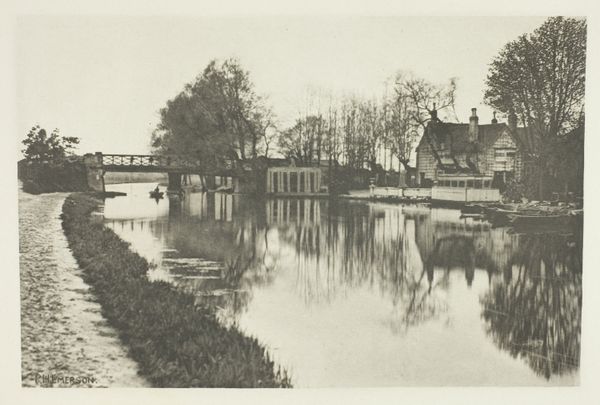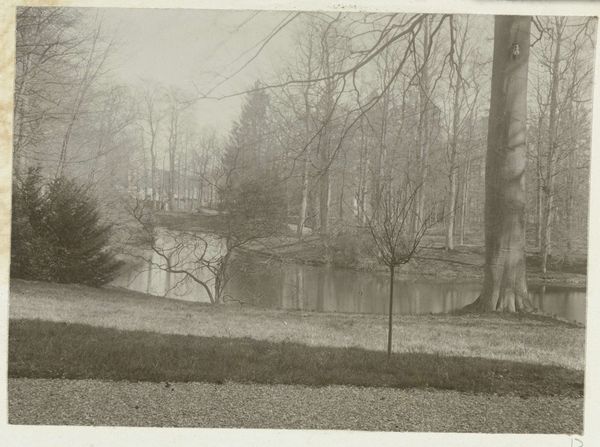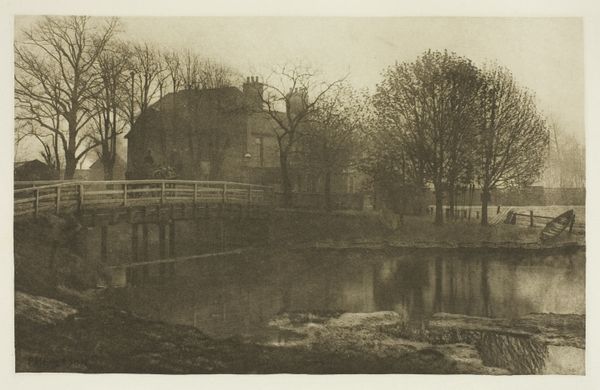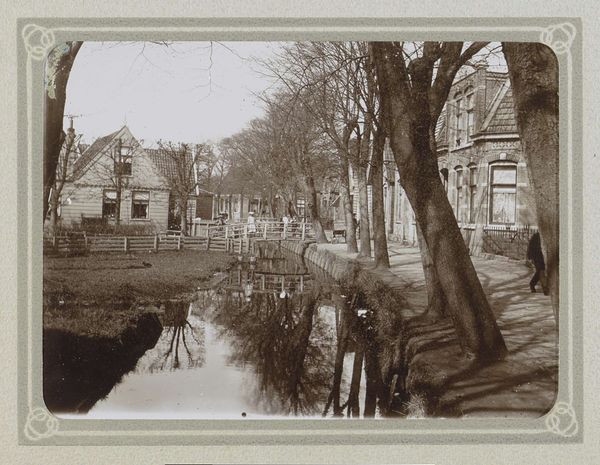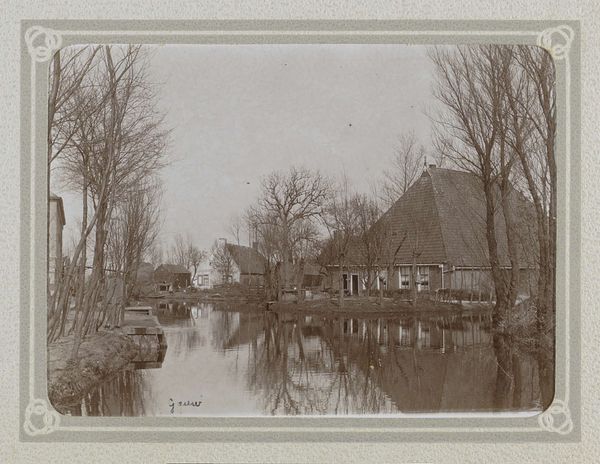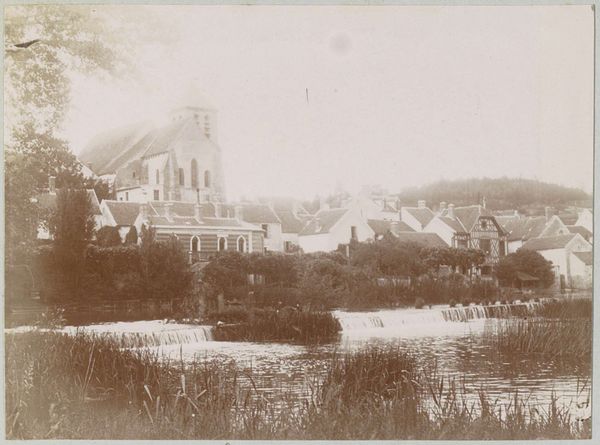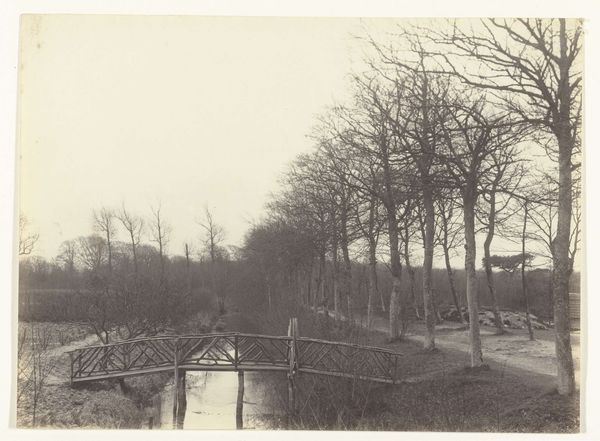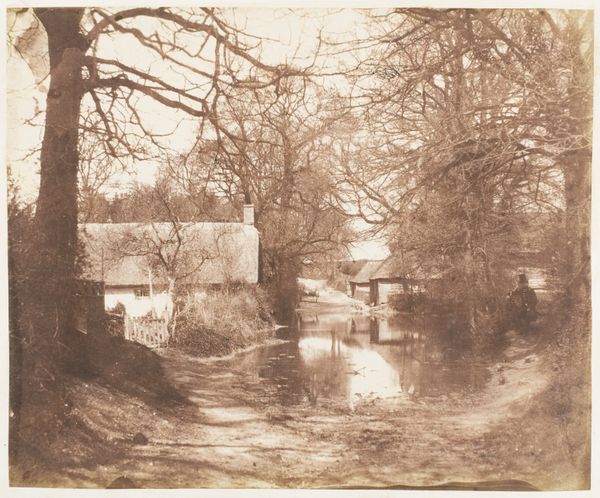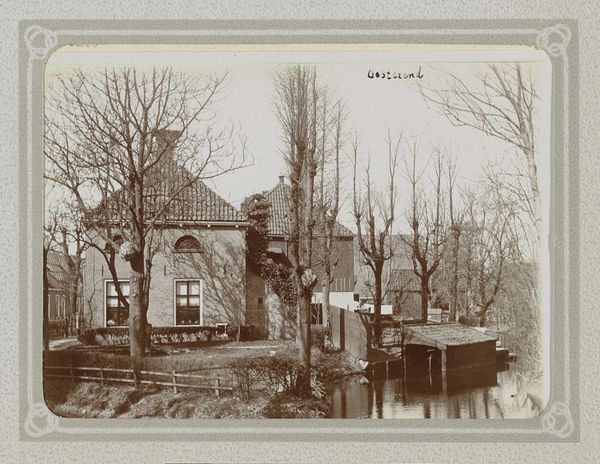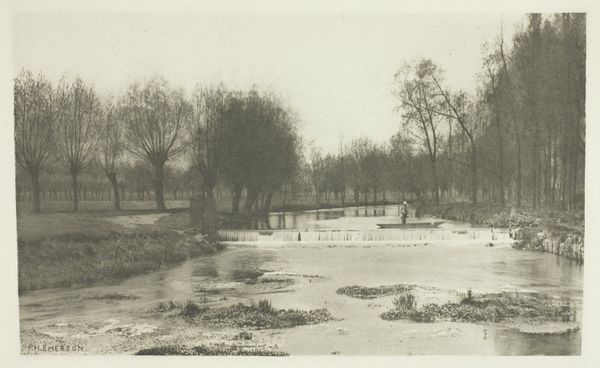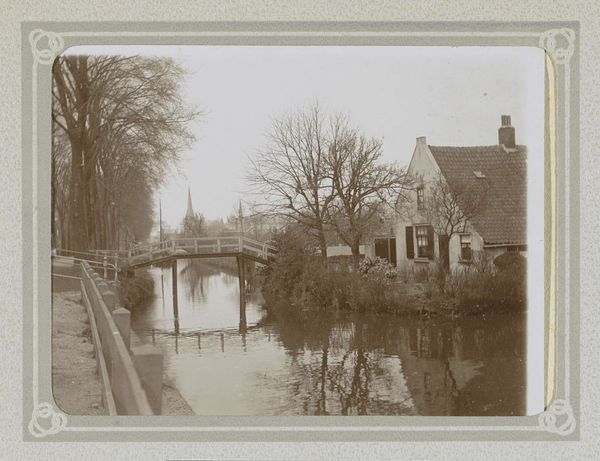
photography, pencil
#
medieval
#
black and white photography
#
landscape
#
nature
#
photography
#
outdoor scenery
#
pencil
#
monochrome photography
#
cityscape
Dimensions: height 68 mm, width 98 mm
Copyright: Rijks Museum: Open Domain
Curator: Welcome to the Rijksmuseum. Here we have an anonymous work entitled "Huizen aan het water," or "Houses on the Water," created sometime between 1940 and 1945. It’s a monochrome photograph that presents a rather intriguing cityscape. Editor: The atmosphere hits me immediately. There’s something quite melancholic, almost desolate about it. The reflection on the water, the bare trees... it evokes a quiet stillness, like a world holding its breath. Curator: Absolutely. And if we consider the likely circumstances of its creation – during the height of the Second World War – it's impossible to ignore the social context impacting both its creation and our viewing of it. What narratives are encoded within those photographic materials? What access did the artist have to make this image during those dark years? The houses and architectural construction that may symbolize solidity are fragile here, and so, it seems, is their cultural and civic memory. Editor: True, but I am interested, as well, in the persistent iconography of rivers as passages to the afterlife. We often find them at the periphery of our collective mythologies of birth, death and regeneration. Looking at this photographic encoding, this landscape makes me consider the idea of memory reflected – as the houses and towers are – in a still body of water. It's not a raging river of time, but rather a dark reflective pool. The photograph becomes a kind of memento mori in the face of such uncertain years. Curator: I see your point; there are indeed loaded symbols that speak across eras and cultures. Though for me, I cannot disregard the artistic decisions made and what materials were available to even attempt something like this then. Every photograph becomes a social record in this case – an important physical link to an unsettling time. Editor: I concur. It’s hard to separate art from history here. Each viewer’s experience becomes a confluence of both cultural meaning and artistic choice. It seems to speak in multiple visual tongues. Curator: An astute observation. Thank you for your time. Editor: Indeed, an enriching encounter with our shared cultural memories.
Comments
No comments
Be the first to comment and join the conversation on the ultimate creative platform.

